From Tanabata to Gion Matsuri: Japanese Festival Traditions Then and Now
Festivals in the Contemporary Landscape of Japan
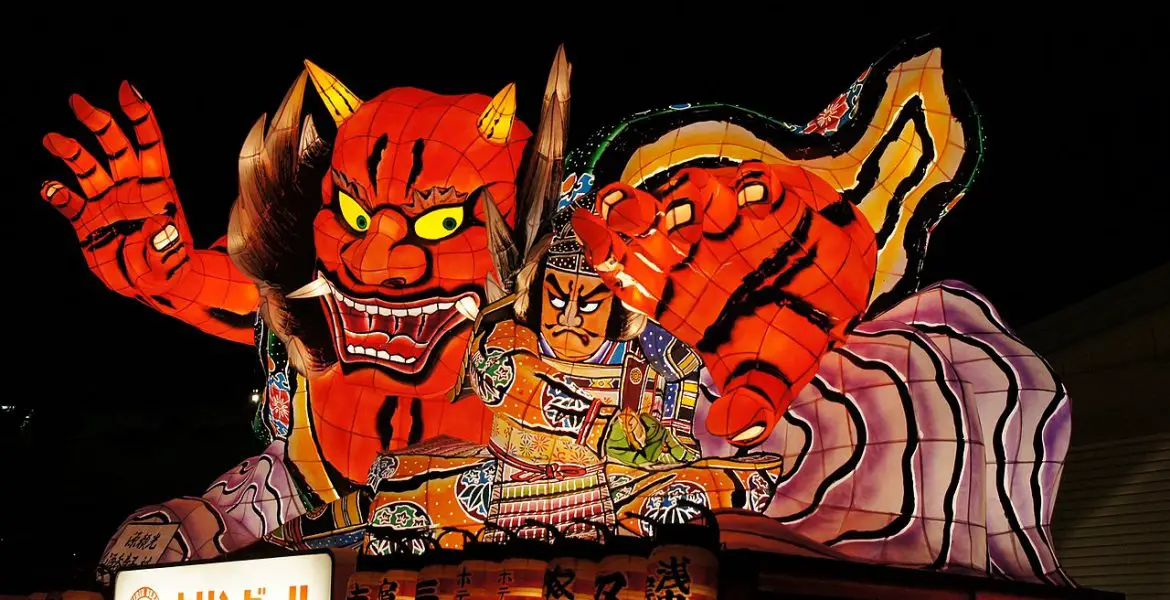
However, the contemporary image of Japan is much more complex. It's a nation that both respects its roots and stands as a leader in modernity. Many of us get to know Japan not only through the prism of its traditions but also through anime and manga. These art forms cross the country's borders and serve as a bridge connecting Japanese culture with the rest of the world. In anime and manga, festivals are often portrayed in a particularly charming way, showing how deeply rooted they are in the Japanese cultural landscape.
Could it be that these two images - traditional and modern - are not as distant from each other as one might think? In many cases, anime and manga not only depict festivals but also enrich our knowledge about them, adding new layers of meaning and context. In this article, we'll examine how tradition and contemporary times intertwine, creating a mosaic full of colors, sounds, and emotions that reflect the soul of Japan.
Origins of Festivals in Japan
The Beginnings of Matsuri: Festivals, or matsuri, are deeply rooted in Japanese culture and history. The first of them emerged during the Yayoi period (300 BC– 300 AD) when agricultural tribes began organizing ceremonies in honor of field deities, asking for a good harvest and protection from natural disasters. Many of these primal rituals became the foundation for later Shinto festivals.
 Shinto and Animism: Shinto, as Japan's indigenous religion, is strongly tied to nature and the world around us. Shinto beliefs are based on the concept of kami – deities and spirits that inhabit everything, from mountains to rivers. Animism, regarded as one of the oldest forms of religiosity in Japan, also played an essential role, emphasizing the presence of spirits in nature.
Shinto and Animism: Shinto, as Japan's indigenous religion, is strongly tied to nature and the world around us. Shinto beliefs are based on the concept of kami – deities and spirits that inhabit everything, from mountains to rivers. Animism, regarded as one of the oldest forms of religiosity in Japan, also played an essential role, emphasizing the presence of spirits in nature.
Gion Matsuri – A Millennium Festival: One of the oldest and most famous festivals in Japan, Gion Matsuri, has its origins in the year 869 AD. Back then, residents of Kyoto organized processions and rituals to appease ancestral spirits and prevent epidemics. Today, the festival lasts the entire month of July and attracts millions of tourists worldwide.
 Tanabata – A Blend of Legend and Astronomical Observation: The Tanabata festival, celebrated on July 7th, is based on an ancient legend of separated lovers who meet once a year. It originated from the Chinese Qixi festival and was adopted by the Japanese during the Nara period (710–794 AD). Over time, it merged with local customs and became one of Japan's primary summer festivals.
Tanabata – A Blend of Legend and Astronomical Observation: The Tanabata festival, celebrated on July 7th, is based on an ancient legend of separated lovers who meet once a year. It originated from the Chinese Qixi festival and was adopted by the Japanese during the Nara period (710–794 AD). Over time, it merged with local customs and became one of Japan's primary summer festivals.
Kanda Matsuri: The Kanda Festival, held in Tokyo, dates back to the Edo period when Tokyo (then Edo) became Japan's new capital. Kanda Matsuri was initially a celebration in honor of deities that protected the city and its inhabitants from misfortunes. Today, it's one of Tokyo's three major festivals.
 The Significance of Festivals: Festivals were not only occasions to celebrate and pray but also crucial tools in maintaining social unity and shaping Japanese identity. They allowed residents of different regions to exchange experiences, share legends and tales, and celebrate common values. Each of these festivals has its unique rituals, stories, and traditions that have survived centuries and constitute an inseparable element of Japan's cultural heritage.
The Significance of Festivals: Festivals were not only occasions to celebrate and pray but also crucial tools in maintaining social unity and shaping Japanese identity. They allowed residents of different regions to exchange experiences, share legends and tales, and celebrate common values. Each of these festivals has its unique rituals, stories, and traditions that have survived centuries and constitute an inseparable element of Japan's cultural heritage.
Various Festivals in Anime
One of the most famous festivals in Japan, Gion Matsuri, rooted in Kyoto, has been celebrated for over a thousand years. Initially, its purpose was to ward off evil spirits and epidemics. In the world of anime, this festival has been depicted in various series. In "The Eccentric Family," for instance, Kyoto and the Gion Festival serve as the primary backdrop for the plot, and the characters participate in the parade and other festival rituals.
Originating from Tokyo, Kanda Matsuri is one of the three most significant Edo festivals. It's a lively celebration where temple processions roam the city streets. In the anime "Durarara!!", one episode refers to the Kanda Festival, where characters stroll around the festival, showcasing its hustle and ambiance.
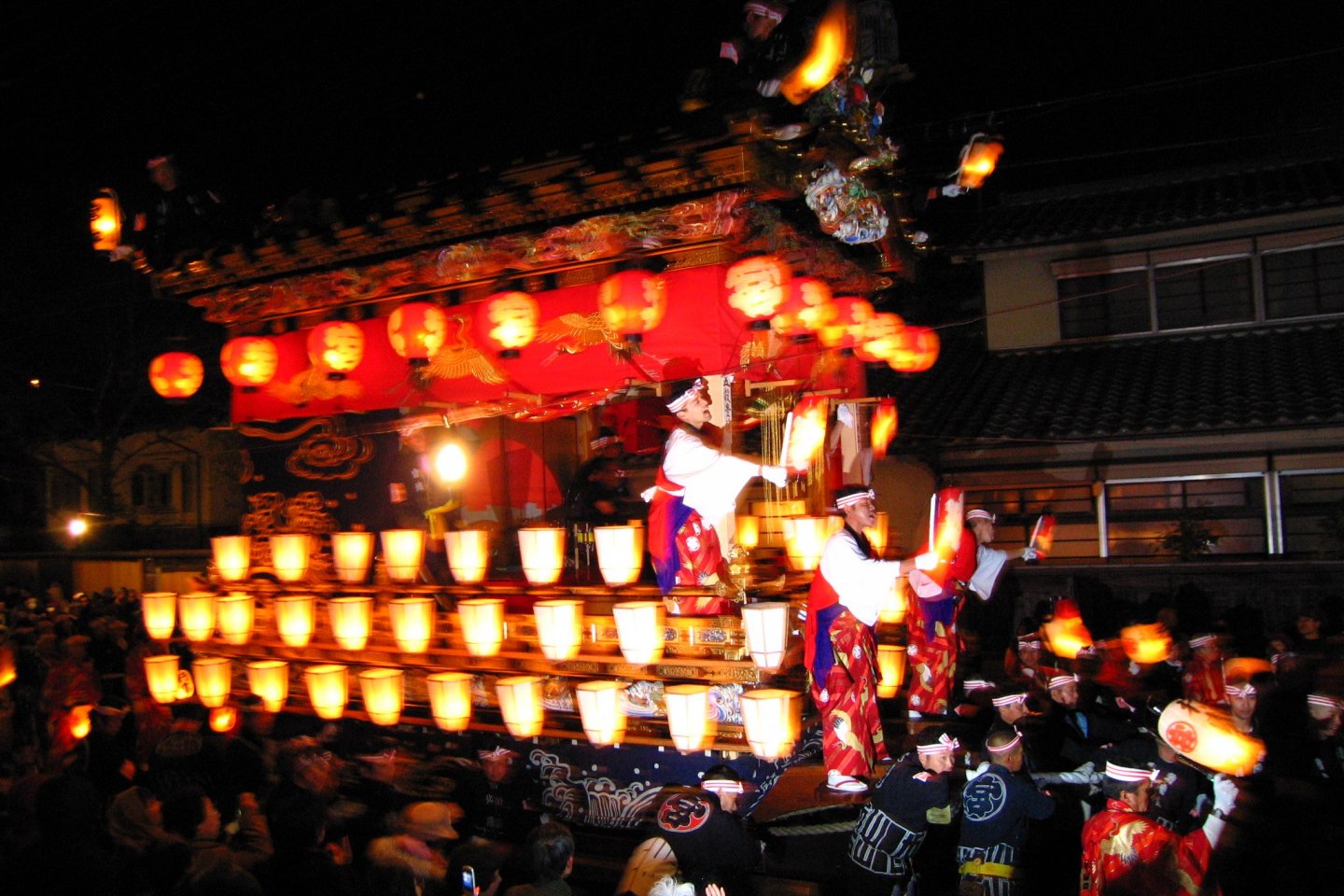
In many anime, festivals play a key role in character development and in forging relationships between them. Popular scenes, such as heroes wearing traditional yukata, participating in dances, or admiring fireworks, are typical of many series.
In many anime series, festivals often become the setting for pivotal events where characters experience significant moments in their lives. For example, in "Clannad," the school festival is the backdrop for many significant moments for the main characters.
Anime often depicts how traditional festivals are integrated with modern life in Japan. In "Kimi ni Todoke," the characters participate in the traditional Tanabata festival, but incorporate modern elements like text messaging and social media.
Portraying festivals in anime serves not just as a backdrop for the plot but also as a way to showcase the rich culture and traditions of Japan. The series "Hanasaku Iroha" focuses on life in a traditional Japanese inn and highlights various festivals reflecting the everyday life and traditions of the country.
While many older anime focus on the traditional aspects of festivals, newer series often add modern elements and twists. In "Love, Chunibyo & Other Delusions," for example, a traditional lantern festival is combined with the fantastical elements typical of the main character. This demonstrates how festivals evolve and adapt to contemporary culture while maintaining their traditional roots.
20 Most Important Festivals in Japan
The most popular contemporary festivals in Japan include:
-
Gion Matsuri (Kyoto) - Held since the 9th century, it's one of the largest festivals in Japan aimed at warding off evil spirits and preventing natural disasters, characterized by impressive processions and floats.
-
Tanabata Matsuri (nationwide) - Celebrated in July, based on an ancient legend of two lovers separated by the Milky Way river meeting once a year. People hang colorful wishes on bamboo branches.
-
Kanda Matsuri (Tokyo) - Originates from the Edo period; a vibrant festival where shrines are paraded through the streets.
-
Tenjin Matsuri (Osaka) - Exists since the 10th century, known for boat processions and fireworks, celebrating the spirit of Sugawara no Michizane.
-
Sapporo Snow Festival (Sapporo) - Held since 1950, famous for its massive snow and ice sculptures.
-
Awa Odori (Tokushima) - A 400-year-old tradition, a dance festival where crowds dance through the streets in traditional costumes.
-
Cherry Blossom Festival (nationwide) - The springtime blooming of sakura; people organize picnics under blooming cherry trees, celebrating the fleeting beauty of nature.
-
Nebuta Matsuri (Aomori) - From the Edo period, a lantern festival with huge, colorful paper figures paraded through the streets.
-
Kishiwada Danjiri Matsuri (Kishiwada) - Held since the 18th century, known for its risky cart races.
-
Nada No Kenka Matsuri (Himeji) - A fighting festival where teams battle while carrying temple floats.
-
Hakata Gion Yamakasa (Fukuoka) - Over 700 years old, known for cart races and processions of men carrying platforms through the city.
-
Sanja Matsuri (Tokyo) - Held since the 17th century, one of the wildest and most energetic festivals in Japan with shrine parading.
-
Sumida River Fireworks (Tokyo) - From the Edo period, one of the largest fireworks displays in Japan.
-
Takayama Festival (Takayama) - Held since the 17th century, a spring and autumn festival with hand-carved floats.
-
Sendai Tanabata (Sendai) - Related to the Tanabata festival, but it's the largest in Japan with thousands of colorful decorations.
-
Okinawa Dragon Boat Race (Okinawa) - A tradition from China; rhythmic boat races and festive celebrations.
-
Jidai Matsuri (Kyoto) - Since 1895, an era festival with a procession showcasing different periods in Kyoto's history.
-
Shonan Hiratsuka Tanabata (Hiratsuka) - A version of the Tanabata festival known for its massive, handcrafted decorations.
-
Tōrō Nagashi (nationwide) - In August, people release paper lanterns on water to guide the spirits of ancestors back to the afterlife.
-
Yuki Matsuri (Kawasaki) - Also known as the "Penis Festival"; a fertility celebration with a procession of a giant wooden phallus and other fertility symbols. These festivals reflect the richness of Japanese culture and the diversity of its traditions. Many are regularly featured in anime, showing their enduring significance in Japan's pop culture.
Seasonal Festivals in Japan
Japan celebrates the changing seasons through various festivals. Spring festivals like the "Otaue Rice Planting" mark the beginning of the rice planting season and are a tribute to deities ensuring a good harvest. In the hot summer, "Fireworks Festivals" light up the night sky, providing locals and tourists alike with spectacular displays of colors and patterns.
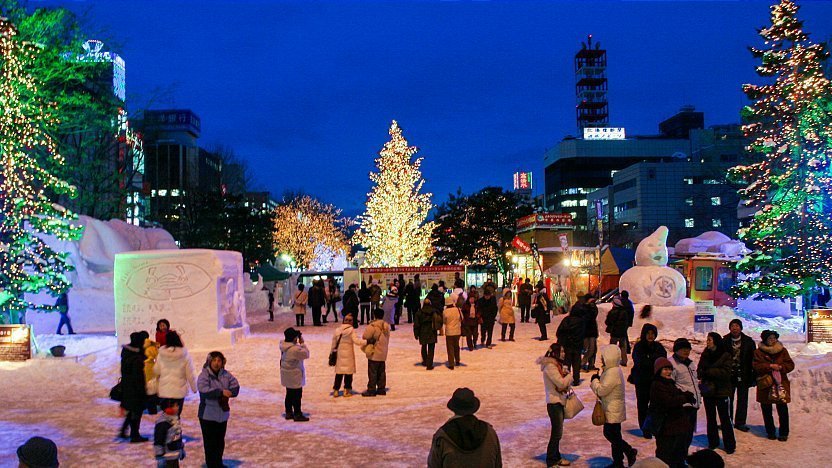
In Japanese animation, these festivals are often showcased in all their glory, portraying both their vibrancy and joy, as well as their deeper cultural significance. In anime, they can serve as the backdrop for pivotal moments in the plot, romantic encounters, or as a way to depict the everyday life of the Japanese. Viewers worldwide get to immerse themselves in the traditional atmosphere of Japan, simultaneously learning about its culture and customs.
Seasonal Festivals in Anime
 "Your Name" ("Kimi no Na wa") - One of the most renowned anime in recent years, created by Makoto Shinkai. The story centers around two teenagers, Mitsuha and Taki, who unexpectedly start switching bodies. A key element of the film is the sake offering festival, based on real traditions linked to making sake from rice. This festival plays a pivotal role in the protagonists uncovering the mystery that binds them. During this ceremony, Mitsuha performs a traditional dance as part of the ritual, which remains one of the most memorable scenes of the movie.
"Your Name" ("Kimi no Na wa") - One of the most renowned anime in recent years, created by Makoto Shinkai. The story centers around two teenagers, Mitsuha and Taki, who unexpectedly start switching bodies. A key element of the film is the sake offering festival, based on real traditions linked to making sake from rice. This festival plays a pivotal role in the protagonists uncovering the mystery that binds them. During this ceremony, Mitsuha performs a traditional dance as part of the ritual, which remains one of the most memorable scenes of the movie.
"Summer Wars" - This full-length animation by director Mamoru Hosoda tells the story of the Jinnouchi family, who gather to celebrate the 90th birthday of their matriarch. The main plot revolves around a virtual world called OZ, but scenes from the family's life in the real world are equally important. In one of the pivotal moments, the family organizes a traditional lantern festival in tribute to a deceased family member. This festival merges tradition with modernity, and the lanterns rising towards the sky symbolize the unity of the family during tough times.
 "Anohana: The Flower We Saw That Day" ("Ano Hi Mita Hana no Namae wo Bokutachi wa Mada Shiranai") - In this poignant anime, a group of friends reunites after years of separation to commemorate their deceased friend, Menma. One of the series' central moments is the Summer Fireworks Festival, during which the characters launch fireworks, hoping their friend will see them from the heavens. This festival is not just an opportunity for the characters to say goodbye to Menma but also confront their own feelings and traumas from the past. Visually, the festival provides one of the most touching and colorful moments in the entire series.
"Anohana: The Flower We Saw That Day" ("Ano Hi Mita Hana no Namae wo Bokutachi wa Mada Shiranai") - In this poignant anime, a group of friends reunites after years of separation to commemorate their deceased friend, Menma. One of the series' central moments is the Summer Fireworks Festival, during which the characters launch fireworks, hoping their friend will see them from the heavens. This festival is not just an opportunity for the characters to say goodbye to Menma but also confront their own feelings and traumas from the past. Visually, the festival provides one of the most touching and colorful moments in the entire series.
Echoes of the Past in the Modern World
Seasonal festivals in Japan, although rooted in ancient traditions, also serve as a bridge connecting the past with the present. In the digital age, where technology and virtual reality increasingly permeate daily life, these festivals remind people of the values that have been the essence of Japanese culture for centuries. They celebrate the cycle of life, nature, and human relationships.
For many young Japanese, as well as international audiences, anime becomes a gateway to discovering these traditions. Although festivals might be portrayed in a stylized manner and often with added fantastical elements, they nonetheless convey authentic emotions and the spirit of the community that remains unchanged over the ages. Anime, as a medium, plays a vital role in preserving and transmitting these traditions to future generations, allowing them to appreciate the deep history and culture behind the colorful screens.
"Strong Japanese Women"
see book by the author
of the page
未開 ソビエライ
An enthusiast of Asian culture with a deep appreciation for the diverse philosophies of the world. By education, a psychologist and philologist specializing in Korean studies. At heart, a programmer (primarily for Android) and a passionate technology enthusiast, as well as a practitioner of Zen and mono no aware. In moments of tranquility, adheres to a disciplined lifestyle, firmly believing that perseverance, continuous personal growth, and dedication to one's passions are the wisest paths in life. Author of the book "Strong Women of Japan" (>>see more)
Personal motto:
"The most powerful force in the universe is compound interest." - Albert Einstein (probably)
Mike Soray
(aka Michał Sobieraj)
未開 ソビエライ
An enthusiast of Asian culture with a deep appreciation for the diverse philosophies of the world. By education, a psychologist and philologist specializing in Korean studies. At heart, a programmer (primarily for Android) and a passionate technology enthusiast, as well as a practitioner of Zen and mono no aware. In moments of tranquility, adheres to a disciplined lifestyle, firmly believing that perseverance, continuous personal growth, and dedication to one's passions are the wisest paths in life. Author of the book "Strong Women of Japan" (>>see more)
Personal motto:
"The most powerful force in the universe is compound interest." - Albert Einstein (probably)
Mike Soray
(aka Michał Sobieraj)
Write us...
Ciechanów, Polska
dr.imyon@gmail.com
___________________
inari.smart
Would you like to share your thoughts or feedback about our website or app? Leave us a message, and we’ll get back to you quickly. We value your perspective!
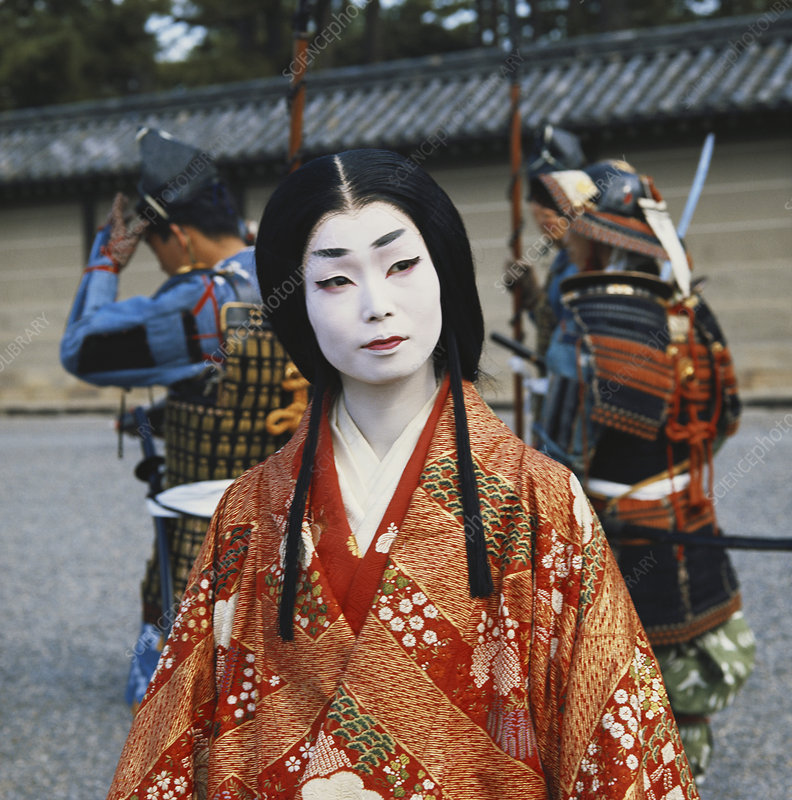 Shinto and Animism: Shinto, as Japan's indigenous religion, is strongly tied to nature and the world around us. Shinto beliefs are based on the concept of kami – deities and spirits that inhabit everything, from mountains to rivers. Animism, regarded as one of the oldest forms of religiosity in Japan, also played an essential role, emphasizing the presence of spirits in nature.
Shinto and Animism: Shinto, as Japan's indigenous religion, is strongly tied to nature and the world around us. Shinto beliefs are based on the concept of kami – deities and spirits that inhabit everything, from mountains to rivers. Animism, regarded as one of the oldest forms of religiosity in Japan, also played an essential role, emphasizing the presence of spirits in nature. 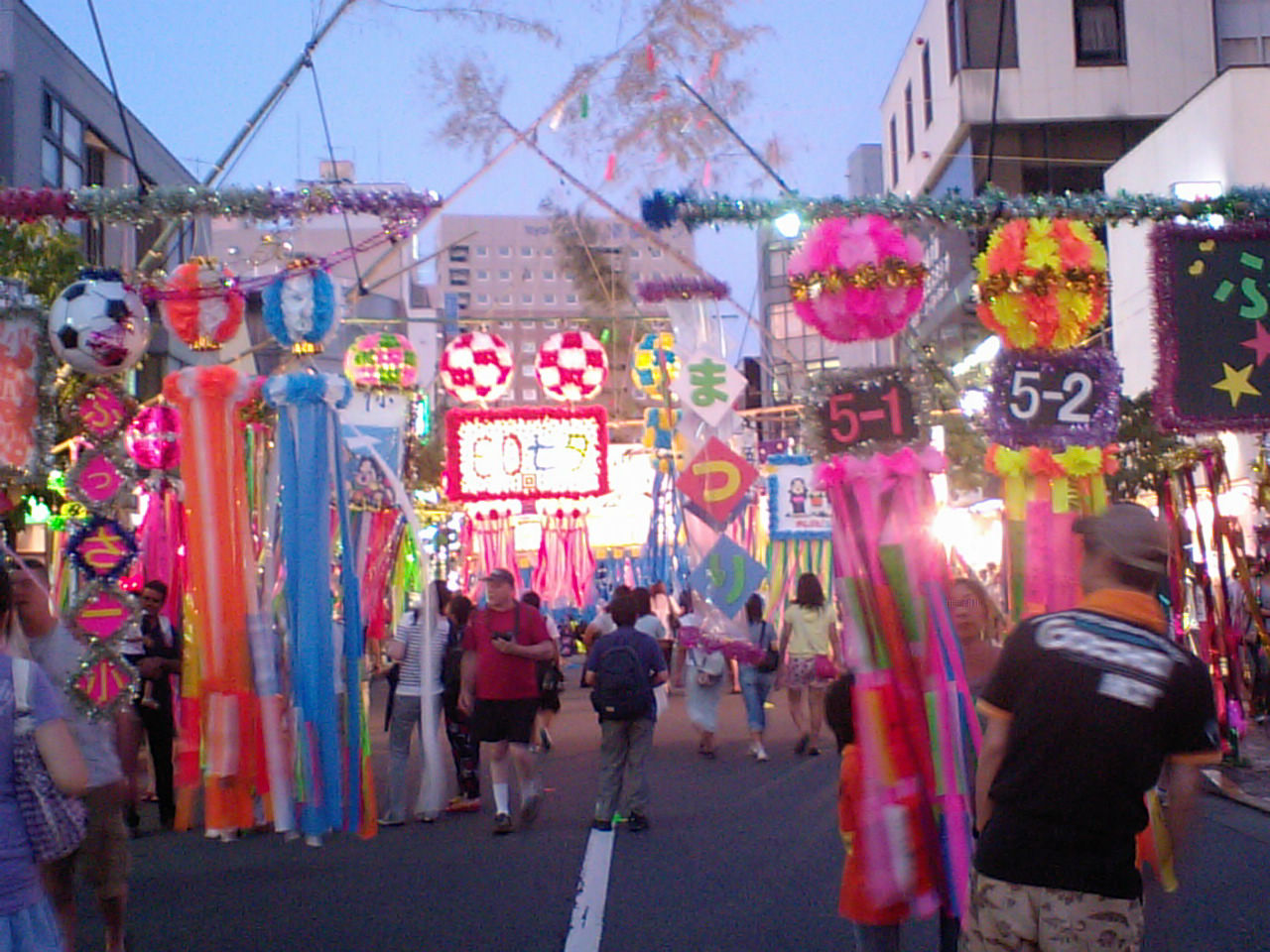 Tanabata – A Blend of Legend and Astronomical Observation: The Tanabata festival, celebrated on July 7th, is based on an ancient legend of separated lovers who meet once a year. It originated from the Chinese Qixi festival and was adopted by the Japanese during the Nara period (710–794 AD). Over time, it merged with local customs and became one of Japan's primary summer festivals.
Tanabata – A Blend of Legend and Astronomical Observation: The Tanabata festival, celebrated on July 7th, is based on an ancient legend of separated lovers who meet once a year. It originated from the Chinese Qixi festival and was adopted by the Japanese during the Nara period (710–794 AD). Over time, it merged with local customs and became one of Japan's primary summer festivals. 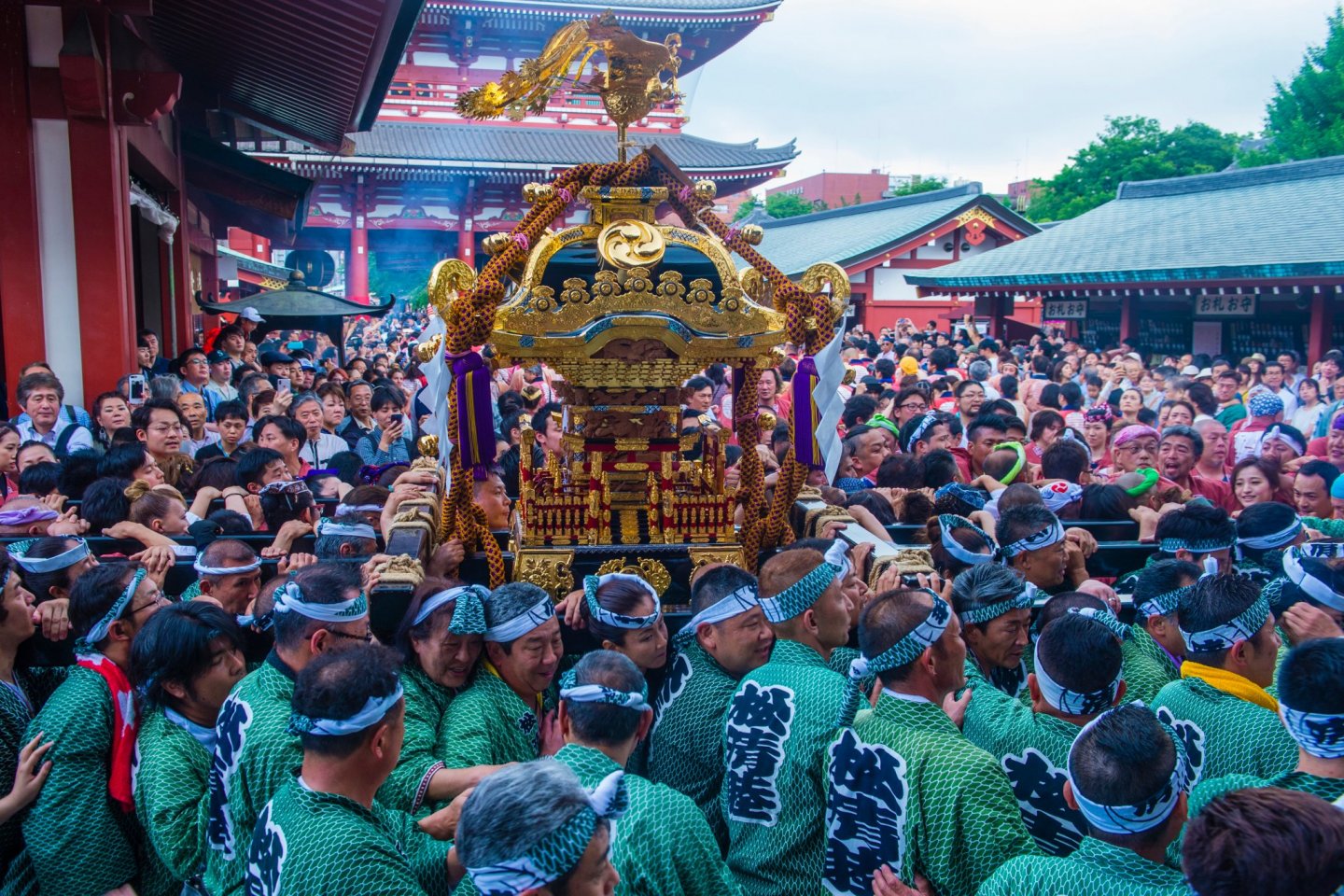 The Significance of Festivals: Festivals were not only occasions to celebrate and pray but also crucial tools in maintaining social unity and shaping Japanese identity. They allowed residents of different regions to exchange experiences, share legends and tales, and celebrate common values. Each of these festivals has its unique rituals, stories, and traditions that have survived centuries and constitute an inseparable element of Japan's cultural heritage.
The Significance of Festivals: Festivals were not only occasions to celebrate and pray but also crucial tools in maintaining social unity and shaping Japanese identity. They allowed residents of different regions to exchange experiences, share legends and tales, and celebrate common values. Each of these festivals has its unique rituals, stories, and traditions that have survived centuries and constitute an inseparable element of Japan's cultural heritage.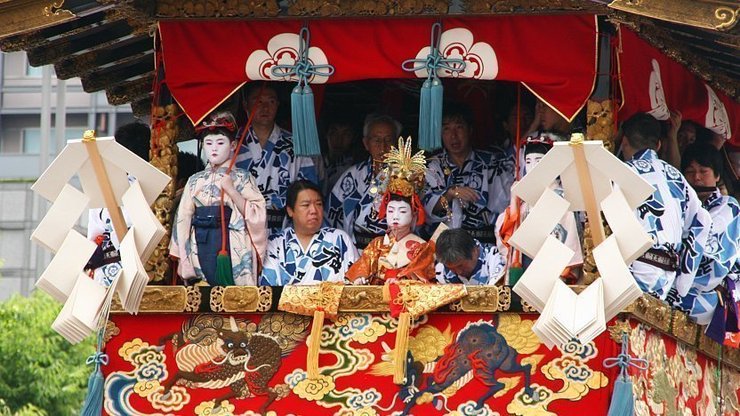 Gion Matsuri (Kyoto) - Held since the 9th century, it's one of the largest festivals in Japan aimed at warding off evil spirits and preventing natural disasters, characterized by impressive processions and floats.
Gion Matsuri (Kyoto) - Held since the 9th century, it's one of the largest festivals in Japan aimed at warding off evil spirits and preventing natural disasters, characterized by impressive processions and floats.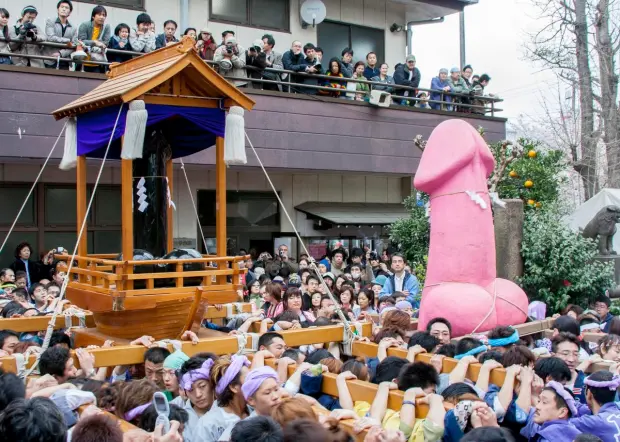 Yuki Matsuri (Kawasaki) - Also known as the "Penis Festival"; a fertility celebration with a procession of a giant wooden phallus and other fertility symbols. These festivals reflect the richness of Japanese culture and the diversity of its traditions. Many are regularly featured in anime, showing their enduring significance in Japan's pop culture.
Yuki Matsuri (Kawasaki) - Also known as the "Penis Festival"; a fertility celebration with a procession of a giant wooden phallus and other fertility symbols. These festivals reflect the richness of Japanese culture and the diversity of its traditions. Many are regularly featured in anime, showing their enduring significance in Japan's pop culture.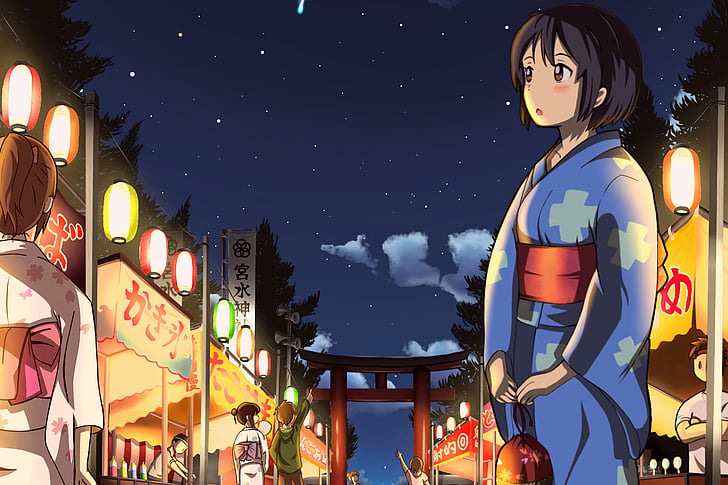 "Your Name" ("Kimi no Na wa") - One of the most renowned anime in recent years, created by Makoto Shinkai. The story centers around two teenagers, Mitsuha and Taki, who unexpectedly start switching bodies. A key element of the film is the sake offering festival, based on real traditions linked to making sake from rice. This festival plays a pivotal role in the protagonists uncovering the mystery that binds them. During this ceremony, Mitsuha performs a traditional dance as part of the ritual, which remains one of the most memorable scenes of the movie.
"Your Name" ("Kimi no Na wa") - One of the most renowned anime in recent years, created by Makoto Shinkai. The story centers around two teenagers, Mitsuha and Taki, who unexpectedly start switching bodies. A key element of the film is the sake offering festival, based on real traditions linked to making sake from rice. This festival plays a pivotal role in the protagonists uncovering the mystery that binds them. During this ceremony, Mitsuha performs a traditional dance as part of the ritual, which remains one of the most memorable scenes of the movie.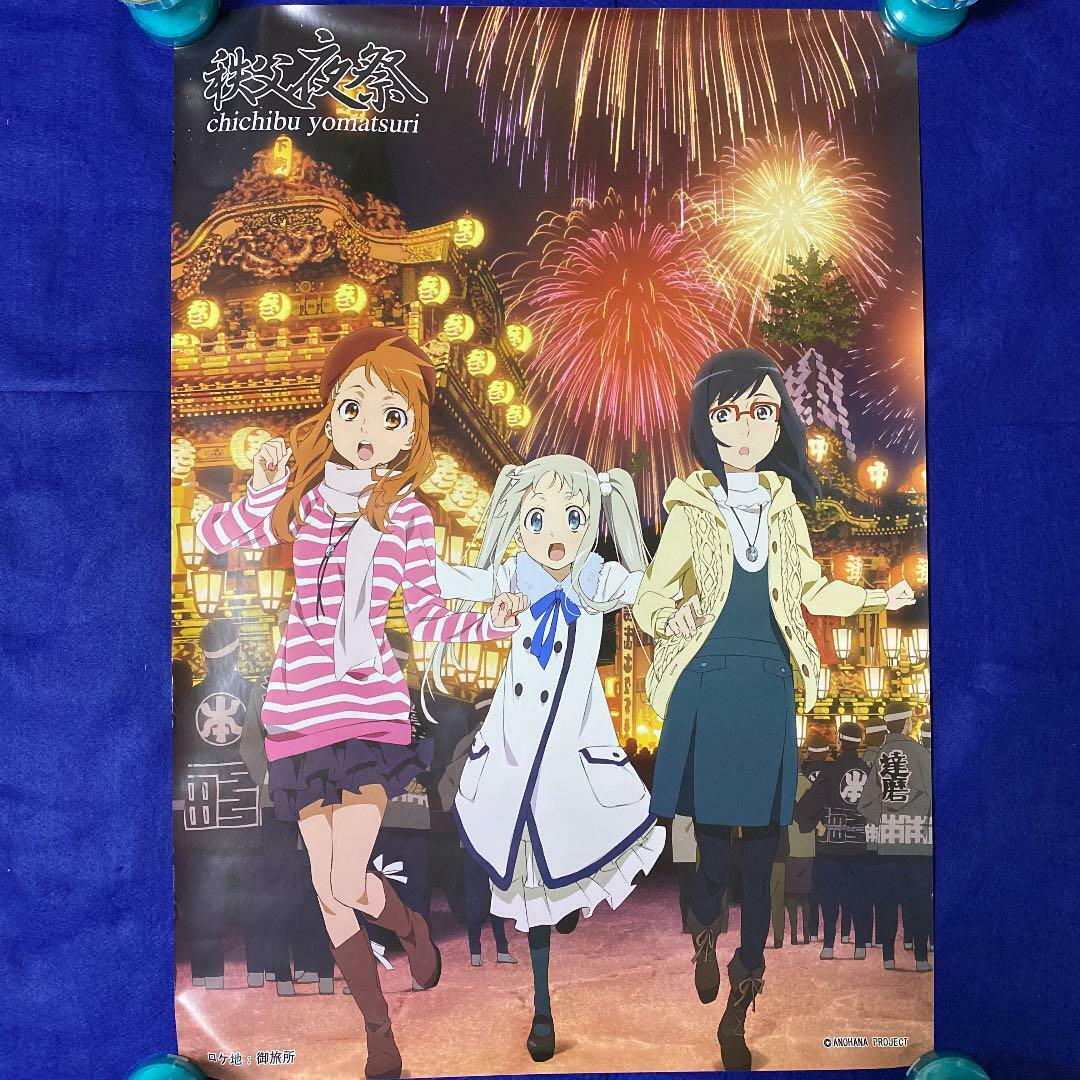 "Anohana: The Flower We Saw That Day" ("Ano Hi Mita Hana no Namae wo Bokutachi wa Mada Shiranai") - In this poignant anime, a group of friends reunites after years of separation to commemorate their deceased friend, Menma. One of the series' central moments is the Summer Fireworks Festival, during which the characters launch fireworks, hoping their friend will see them from the heavens. This festival is not just an opportunity for the characters to say goodbye to Menma but also confront their own feelings and traumas from the past. Visually, the festival provides one of the most touching and colorful moments in the entire series.
"Anohana: The Flower We Saw That Day" ("Ano Hi Mita Hana no Namae wo Bokutachi wa Mada Shiranai") - In this poignant anime, a group of friends reunites after years of separation to commemorate their deceased friend, Menma. One of the series' central moments is the Summer Fireworks Festival, during which the characters launch fireworks, hoping their friend will see them from the heavens. This festival is not just an opportunity for the characters to say goodbye to Menma but also confront their own feelings and traumas from the past. Visually, the festival provides one of the most touching and colorful moments in the entire series.
